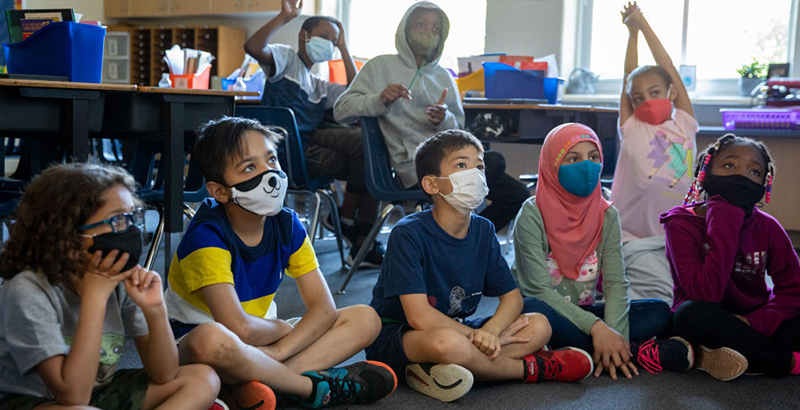Lake: The COVID Crisis Cracked Our Education System. A New Reform Coalition Must Come Together to Fix It in the Interest of Children

Get stories like this delivered straight to your inbox. Sign up for The 74 Newsletter
Anyone who cares about kids must rejoice over their being back in school with their peers. But that should not blind us to the harsh truths we have learned about our public education system, how badly it responded to the pandemic and how, as always, it served those with loud voices and political power and left those who were already struggling in school even further behind.
What happened during the past 20 months should have been entirely predictable for anyone who was advocating for students and families before the pandemic struck.
A rigid system designed for sameness cracked under the pressure of a crisis. Despite the exhaustive work of many well-meaning people, schools and school systems were largely unable to meet individual student needs. Children who had already been struggling were subjected to even more hardship. People were rightly outraged that some students did not have access to Wi-Fi and portable devices. To many, such inequities were enough to cause them to first call for schools to remain open, then for them to remain closed.
But where was the outrage over unequal access to technology before the pandemic struck? Why were people not furious over the decades of research that shows historically marginalized students — Black, Hispanic and low-income, in particular — are taught by less effective teachers? Or the large and persistent gaps in academic outcomes by race and income?
Many were horrified to witness, via CRPE’s ongoing data collection, how slowly and badly so many school districts pivoted to remote learning and how few adopted anything akin to innovation, or even well-known, evidence-based interventions. But those who have long fought for shifts in 21st century teaching and learning simply gave each other a sad and resigned shrug.
Millions of suburban families were shocked to see union politics and outdated management systems impede even a basic functioning of services and individualized support. But low-income families, complex learners and those with a child with a disability thought, “Welcome to the party.”
It’s become cliché to say that the pandemic exposed and exacerbated inequality, so let me be more specific. Let’s look reality in the eye and not kid ourselves into thinking those inequalities were accidental when they were squarely by design.
American public schools are hardwired for inequality. Union policies and the way we fund schools ensure that students who most need the best and most effective teaching do not receive it. Lack of incentives to respond to student and family needs, combined with weak accountability for improved outcomes, means schools and districts resist, rather than embrace, individualization, adaptation and innovation.
No, what happened should not surprise us. It should, in fact, deepen our resolve for the changes that so-called reformers have been seeking for decades: high-functioning, 21st century schools and districts driven by evidence instead of politics, and immediate high-quality choices and options for those who do not have access to such schools and districts.
As we look around at the still-unfolding aftermath of the pandemic, the evidence is clear: Our students need help now. They missed many months worth of instruction and suffered socially and emotionally. We must pay them back what they are owed, and we must find a way to build a more equitable, nimble and responsive American education system.
Now more than ever, we need deep and lasting reforms. Opponents of such changes must be called out for what they are doing: standing in the way of what students need.
And yet, the so-called education reform movement was hardly moving in unison pre-pandemic. Old coalitions were flailing due in part to their own missteps and in part to fierce backlash against controversial policies necessary for change. Differences between liberals and conservatives previously seen as tolerable for a bipartisan movement became litmus tests.
It is time for a new, broader reform coalition made up of all those who saw things in the American education system during the pandemic that they cannot unsee — doctors, mental health providers, church leaders, afterschool providers, community activists, suburban parents, parents of students with disabilities and business leaders. Advocates for children must lead the way by uniting despite our differences.
We cannot afford infighting and boutique squabbles. Education supporters from all corners must come together to align, strategize and win legislative battles in the interest of children.
Time is wasting for this generation of students, and history will repeat itself for the next generation if we do not act.
Get stories like these delivered straight to your inbox. Sign up for The 74 Newsletter

;)
